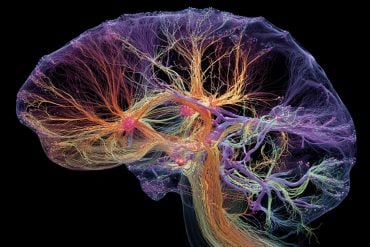Summary: According to researchers, exercising weekly can significantly slow the progress of Parkinson’s disease over a two year period.
Source: IOS Press.
Parkinson’s disease (PD) is a progressive condition that often results in mobility impairments and can lead to decreased health-related quality of life (HRQL) and death. There is evidence that physical activity can delay decline in PD patients. In a study in the Journal of Parkinson’s Disease, researchers determined that that people who exercised regularly had significantly slower declines in HRQL and mobility over a two-year period.
Lead investigator Miriam R. Rafferty, PhD, of Northwestern University and Rehabilitation Institute of Chicago, describes the main findings of the study. “We found that people with Parkinson’s disease who maintained exercise 150 minutes per week had a smaller decline in quality of life and mobility over two years compared to people who did not exercise or exercised less. The smaller decline was significant for people who started the study as regular exercisers, as well as for people who started to exercise 150 minutes per week after their first study-related visit.”
The data came from the National Parkinson Foundation Quality Improvement Initiative (NPF-QII), an international, multicenter, prospective clinical study of care and outcomes that has recorded data from 21 sites in North America, the Netherlands, and Israel identified as Centers of Excellence by the National Parkinson Foundation. Over 3400 participants provided data over two years, with information collected during at least three clinic visits. The NPF-QII study collects demographics, disease duration, Hoehn and Yahr stage (HY), brief cognitive assessments, as well as data on pharmacologic and non-pharmacologic management of PD symptoms. These observational study visits are scheduled on a yearly basis. At each visit, exercise is measured by the self-reported number of hours per week of exercise.
The Parkinson Disease Questionnaire (PDQ-39) is used to measure patient-reported, PD-specific HRQL. Functional mobility was measured by the Timed Up and Go (TUG) test, in which performance is tested by timing participants as they rise from a chair, walk three meters, turn, and return to a sitting position.

Although this study did not determine which type of exercise is best, it suggests that any type of exercise done with a “dose” of at least 150 minutes per week is better than not exercising. “People with PD should feel empowered to find the type of exercise they enjoy, even those with more advanced symptoms,” remarked Dr. Rafferty.
An unanticipated finding from the study was that the HRQL benefit associated with 30-minute increases in exercise per week was greatest in people with advanced PD. These data have significant implications for making exercise and physical activity more accessible to people with more severe disability. People with more advanced PD may have poor access to regular exercise, as their mobility impairments would limit their independent participation in existing community and group exercise programs.
“The most important part of the study,” according to Dr. Rafferty, “is that it suggests that people who are not currently achieving recommended levels of exercise could start to exercise today to lessen the declines in quality of life and mobility that can occur with this progressive disease.”
Source: Diana Murray – IOS Press
Image Source: NeuroscienceNews.com image is in the public domain.
Original Research: Abstract for “Regular Exercise, Quality of Life, and Mobility in Parkinson’s Disease: A Longitudinal Analysis of National Parkinson Foundation Quality Improvement Initiative Data” by Rafferty, Miriam R.; Schmidt, Peter N.; Luo, Sheng T.; Li, Kan; Marras, Connie; Davis, Thomas L.; Guttman, Mark; Cubillos, Fernando; and Simuni, Tanyah in Journal of Parkinson’s Disease. Published online February 7 2017 doi:10.3233/JPD-160912
[cbtabs][cbtab title=”MLA”]IOS Press “Exercising 2.5 Hours Per Week Associated With Slow Decline For Parkinson’s Patients.” NeuroscienceNews. NeuroscienceNews, 23 March 2017.
<https://neurosciencenews.com/parkinsons-exercise-neurology-6282/>.[/cbtab][cbtab title=”APA”]IOS Press (2017, March 23). Exercising 2.5 Hours Per Week Associated With Slow Decline For Parkinson’s Patients. NeuroscienceNew. Retrieved March 23, 2017 from https://neurosciencenews.com/parkinsons-exercise-neurology-6282/[/cbtab][cbtab title=”Chicago”]IOS Press “Exercising 2.5 Hours Per Week Associated With Slow Decline For Parkinson’s Patients.” https://neurosciencenews.com/parkinsons-exercise-neurology-6282/ (accessed March 23, 2017).[/cbtab][/cbtabs]
Abstract
Regular Exercise, Quality of Life, and Mobility in Parkinson’s Disease: A Longitudinal Analysis of National Parkinson Foundation Quality Improvement Initiative Data
Background: Research-based exercise interventions improve health-related quality of life (HRQL) and mobility in people with Parkinson’s disease (PD). Objective: To examine whether exercise habits were associated with changes in HRQL and mobility over two years.
Methods: We identified a cohort of National Parkinson Foundation Quality Improvement Initiative (NPF-QII) participants with three visits. HRQL and mobility were measured with the Parkinson’s Disease Questionnaire (PDQ-39) and Timed Up and Go (TUG). We compared self-reported regular exercisers (≥2.5 hours/week) with people who did not exercise 2.5 hours/week. Then we quantified changes in HRQL and mobility associated with 30-minute increases in exercise, across PD severity, using mixed effects regression models.
Results: Participants with three observational study visits (n = 3408) were younger, with milder PD, than participants with fewer visits. After 2 years, consistent exercisers and people who started to exercise regularly after their baseline visit had smaller declines in HRQL and mobility than non-exercisers (p < 0.05). Non-exercisers worsened by 1.37 points on the PDQ-39 and a 0.47 seconds on the TUG per year. Increasing exercise by 30 minutes/week was associated with slower declines in HRQL (–0.16 points) and mobility (–0.04 sec). The benefit of exercise on HRQL was greater in advanced PD (–0.41 points) than mild PD (–0.14 points; p < 0.02).
Conclusions: Consistently exercising and starting regular exercise after baseline were associated with small but significant positive effects on HRQL and mobility changes over two years. The greater association of exercise with HRQL in advanced PD supports improving encouragement and facilitation of exercise in advanced PD.
“Regular Exercise, Quality of Life, and Mobility in Parkinson’s Disease: A Longitudinal Analysis of National Parkinson Foundation Quality Improvement Initiative Data” by Rafferty, Miriam R.; Schmidt, Peter N.; Luo, Sheng T.; Li, Kan; Marras, Connie; Davis, Thomas L.; Guttman, Mark; Cubillos, Fernando; and Simuni, Tanyah in Journal of Parkinson’s Disease. Published online February 7 2017 doi:10.3233/JPD-160912






